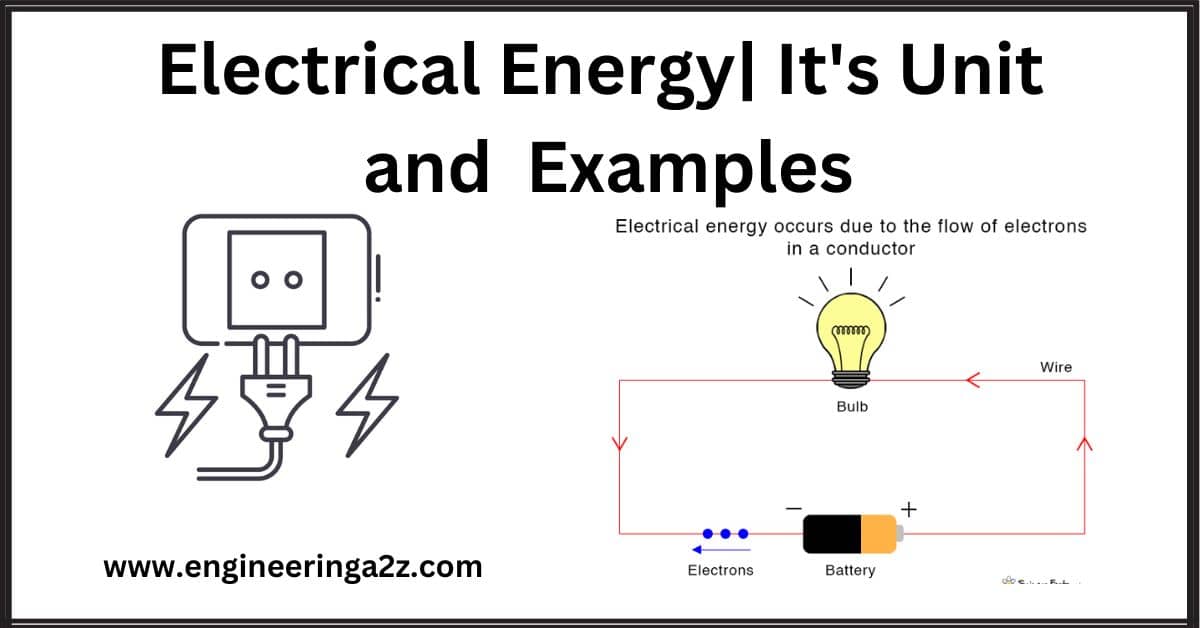
Table of Contents
Although it is a crucial idea in physics, electrical energy is commonly misinterpreted. What then is electrical energy in detail, and what are some of the laws that apply when it is utilized in calculations? Let’s look for answers to these questions in this essay.
What is Electrical Energy?
Electric potential energy or kinetic energy of charged particles is the source of electrical energy. The energy that has been transformed from electric potential energy is how it is generally referred to. Electrical energy is the force that results from the transfer of electrons from one location to another. Current or electricity is the flow of charged particles along or through a media (like a wire).
Unit of Electrical Energy
The joule or watt-second serves as the fundamental unit of electrical energy. When one ampere of current passes through a circuit for one second while a potential difference of one volt is put across it, the electrical energy is said to be one joule. The kilowatt-hour (kWh), also referred to as the Board of Trade unit (B.O.T. ), is the standard measure of electrical energy used in commerce.
1 kwh = 1000 × 60 × 60 watt – second
1 kwh = 36 × 105 Ws or Joules
Generally, one kwh is called one unit.
What are Some Examples of Electrical Energy?
A few examples of electrical energy are:
- In a car battery, a chemical reaction results in the formation of an electron that possesses the energy to move in an electric current. These moving charges provide electrical energy to the circuits in the car.
- Lightning, during a thunderstorm, is an example of electrical energy – what we see as lightning is nothing but electricity discharging in the atmosphere.
- Electric eels generate electrical energy and use it against predators for defense.
What is Electric Power?
It refers to how quickly energy or work is changed in an electrical circuit. It is a way to quantify how much energy is consumed over a certain period of time.
Electrical power is the term used in physics to describe the rate at which an electrical circuit transfers electrical energy per unit of time. Electrical energy in this situation can either be kinetic or potential energy. Potential energy, which is the energy held due to the relative locations of charged particles or electric fields, is taken into account in the majority of situations. P stands for electrical power, which is quantified in Watts.
We talked about the energy that is dissipated due to the heating up of the conductor. The energy dissipated in time interval ∆t is given by
∆W = I V∆t
And the energy dissipated per unit of time is actually the power dissipated, which is given by P = ∆W/∆t. But we know the formula for power is given by P = I V
Hence, according to Ohm’s law, V = IR. Substituting we have,
P = I2R
Or
P = V2/R
It is this power which is responsible for heating up the coil of a bulb, which gives out heat and light.
Frequently Asked Questions (FAQs)
Write the units of electrical energy?
The terms joules, kilowatt-hour, and electron-volt are used to describe electrical energy.
What is the speed of electricity?
Electricity moves at a rate of more than 186,000 miles per second, which is the speed of light.
Write the SI unit of electric power?
Electricity is measured in watts in the SI system.
Write the electric power formula and explain the terms?
P = VI provides the electric power.
where V represents the potential difference, I represents the electric current, and P represents the electric power.How can we express power using ohm’s law?
The power formula can be rewritten using Ohms law as P =I2R or P = V2/R.
Where V is the potential difference, I is the electric current, R is the resistance and P is the electric power.
Read Also :
- Electrical Braking System
- What is Electric Heating
- Fundamentals of Electric Circuits Solutions 6th Edition PDF











Leave a Reply